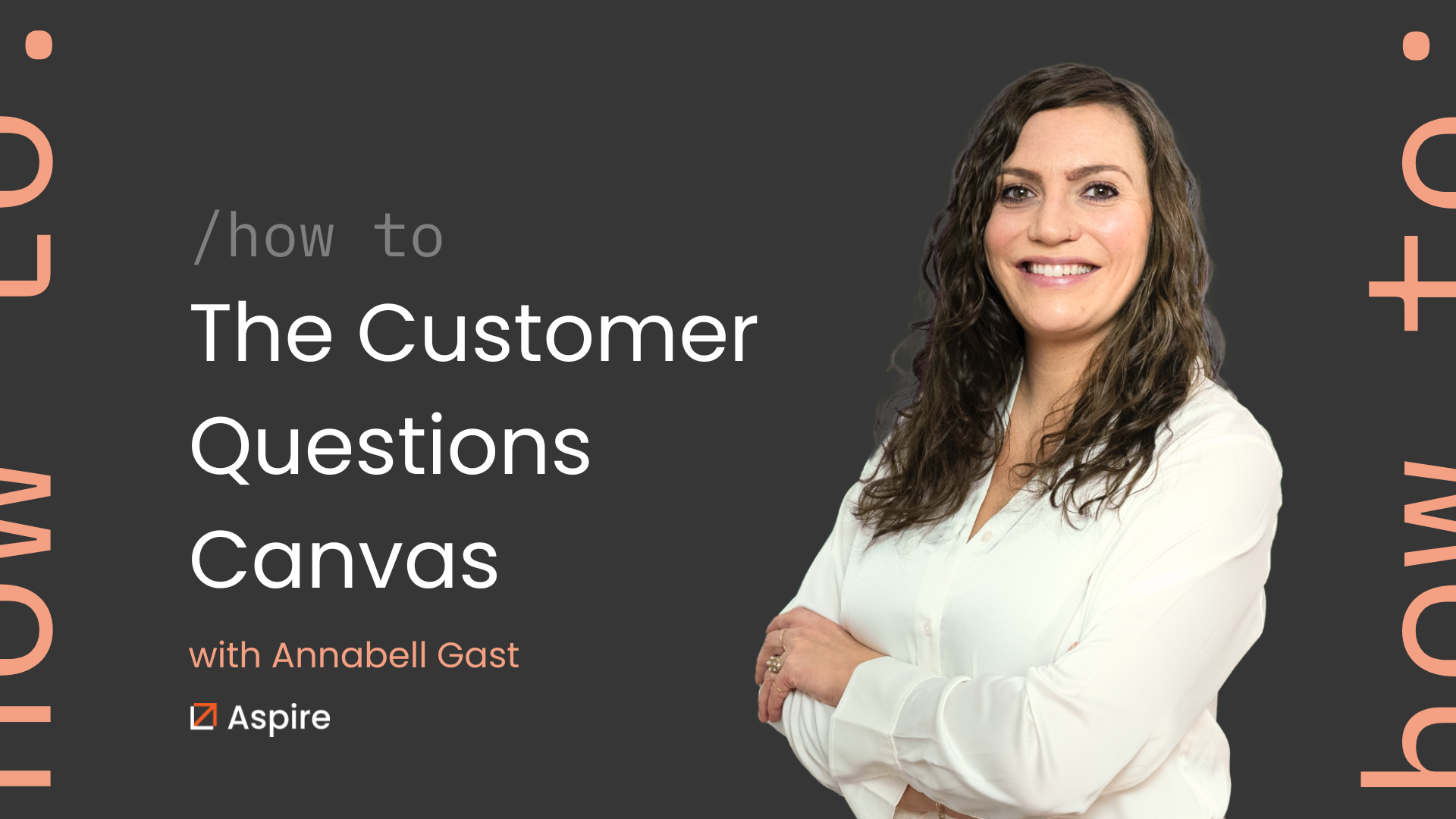How to master customer discovery with the Customer Questions Canvas
Understanding your customers is the cornerstone of creating a successful product or service and will enable you to find product-market fit. The Customer Questions Canvas is an invaluable tool that helps you design effective questions for customer interviews, ensuring you gather the most relevant and insightful information.
Now that you've mapped out your customer persona with the Customer Canvas and outlined your business strategy using the Business Model Canvas, it's time to dive deeper into understanding your customers.
In this blog, we'll guide you through each section of the Customer Questions Canvas, leveraging insights from our expert, Annabell Gast, to equip you with the skills needed for meaningful customer discovery. Whether you're validating assumptions or uncovering new insights, this canvas will help you ask the right questions and gather the most valuable information from your potential customers.
Why use the Canvas?
To quickly understand the value you are providing.
To help you understand your product or service and figure out how to turn your idea into something that works.
To identify the choices customers make when using your product or service.
To help you get a clear idea of what impact the product or service will have.
How to use the canvas
Opening Questions
The opening questions set the tone for your interview and help put your interviewee at ease.
Tip: Start with light, conversational questions that make the interviewee feel comfortable. This sets the stage for more in-depth discussion later.
Good questions to consider:
What's a typical day like for you?
Can you tell me a bit about your role/job/lifestyle?
What are some of the challenges you face in your daily routine?
Focus Area 1: (e.g., Problem Exploration)
This section helps you delve into the specific problems or needs your potential customers face.
Tip: Focus on past behaviours and experiences rather than hypothetical situations. This provides more accurate and valuable insights.
Good questions to consider:
When was the last time you encountered (specific problem)?
How did you handle that situation?
What solutions have you tried in the past?
Focus Area 2: (e.g., Current Solutions)
Here, explore how customers are currently addressing the problem you're trying to solve.
Tip: Be curious and avoid making assumptions. Let the customer's experiences guide the conversation.
Good questions to consider:
What tools or methods do you currently use to address (specific problem)?
How satisfied are you with these solutions?
What improvements would you like to see in existing solutions?
Focus Area 3: (e.g., Ideal Solutions)
This section helps you understand what an ideal solution would look like from the customer's perspective.
Tip: Encourage the interviewee to think broadly and creatively. Their ideas might inspire innovative features for your product or service.
Good questions to consider:
If you had a magic wand, how would you solve [specific problem]?
What would make a solution truly stand out to you?
How would your life/work change if you had the perfect solution?
Closing and Key Takeaways
Plan how you'll conclude the interview and what key information you want to extract.
Tip: End on a positive note and leave the door open for future conversations. Summarize key points to ensure you've understood correctly.
Good questions to consider:
Is there anything else you'd like to add that we haven't covered?
Would it be alright if I reached out to you with any follow-up questions?
How would you summarise your biggest challenge related to (specific problem)?
Remember:
Remember:
Take your time filling out the canvas. Thoughtful preparation leads to more insightful interviews.
Be clear on your customer persona before designing questions.
Focus on past behavior rather than hypothetical situations.
Challenge your assumptions and avoid leading questions.
Consider bringing in an external perspective (friend, mentor) to review your questions and challenge your assumptions.
By using the Customer Questions Canvas, you're setting yourself up for successful customer discovery. This process will help you validate your assumptions, understand your customers better, and ultimately create a product or service that truly meets their needs.

